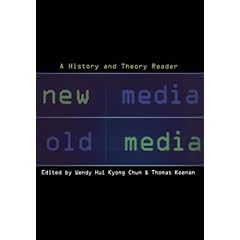 Everyone from Wall Street to Silicon Valley loves Google for its trendsetting maneuvers in the business world. While its technology continues to please, the way it distributes content is seemingly much more effective than the current model of thinking.
Everyone from Wall Street to Silicon Valley loves Google for its trendsetting maneuvers in the business world. While its technology continues to please, the way it distributes content is seemingly much more effective than the current model of thinking.Enter the (old) media.
Google recently announced a deal to distribute MTV's content on the web, simultaneously bringing "old media" content kings into the fold as business partners to smooth out problems that could occur from an old vs. new strategy. This hiring of traditional media company executives allows the converts to serve as liaisons between Media 2.0 (Google) and Media 1.0 (Old Media), and effectively give a "new media" company like Google the successful content to use with its own successful distribution system.
I often put old media and new media on separate sides in a discussion, but this time, it's good to see a bridge. Instead of competing against each other - old media trying to get 'hip' with blogs, vlogs, and other digitally-generated content, and new media trying to strive for resources and professional content - this is probably the first direct link between the two schools of thought.
In an unpublished interview I conducted in May, former Gizmodo editor John Biggs told me that he often had difficulty working with traditional journalists who didn't "get" writing in the blog style - that is, punchy and concise. If Google's actions become trendsetting, as they often do, media may be better able to work with itself - that is, its two generations - and start the process from the top-down, helping the distinct (and they are distinct) generations talk to each other in a trickle-down effect.
In an era where the industry's methods seem ineffective - or at least its actions slow-footed - it's good to see some teamwork come out of the fight to survive.


![Editorialiste [at] gmail](https://blogger.googleusercontent.com/img/b/R29vZ2xl/AVvXsEjzDvlHqUd5msfCmRq2Q5EZRpn_nbVg33bjiUhLEigM_5fudZhIHvuAVxB4_MS0xn-cQ0EKyjxOua1ysQ4NdMzyvhg1oSVTv6OJAarhVTqG0BBkJKTjqBhwMjrMGOANWxT8l8rKFg/s220/editorialiste_logo.jpg)
No comments:
Post a Comment